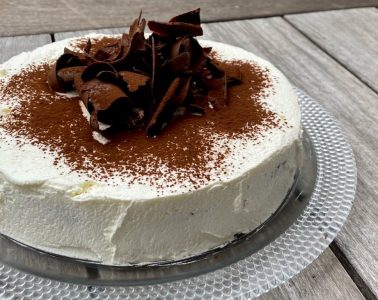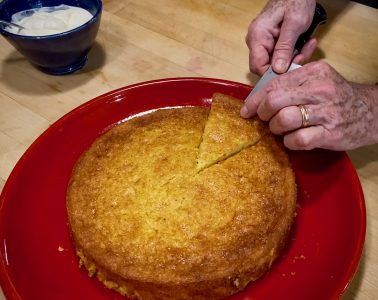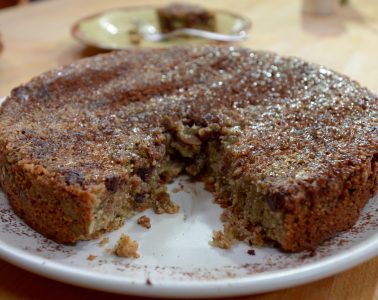INGREDIENTS
- For the Fruit
- 3 tablespoons (42 grams) butter
- 1/2 cup (100 grams) granulated sugar or light brown sugar
- 3 cups (about 18 ounces) peeled, pitted and cubed mango (1/2-inch cubes; you’ll need about 2 ¼ pounds of mangos)
- The finely grated zest of one lime
- For the Cake
- 1 1/2 cups (210 grams) all-purpose flour
- 1/2 teaspoon salt
- 2 teaspoons baking powder
- 3/4 cup (150 grams) granulated sugar
- 2/3 cup olive or vegetable oil
- 2 teaspoons vanilla extract
- 2 large eggs
- 2/3 cup full-fat sour cream or full-fat Greek-style yogurt
- For serving
- About 2 tablespoons añejo tequila or rum (optional)
INSTRUCTIONS
Prepare the pan with the fruit. Turn on the oven to 375 degrees and position the rack in the lower third. In a large (10-inch) nonstick skillet (it needs to have an ovenproof handle), melt the butter over medium heat. When it has turned brown (but not too dark), sprinkle on the ½ cup sugar, then the fruit and the lime zest. Cook for a few minutes, until the fruit released its juice, then remove from the heat.
Make the batter. In a medium bowl, whisk together the flour, salt, baking powder and the ¾ cup sugar. In a separate bowl, whisk together the oil, vanilla, eggs and sour cream or yogurt. Whisk the wet mixture thoroughly into the dry mixture (the mixture is thick), then dollop it over the fruit in the skillet (a bunch of small dollops is easiest to work with) and smooth flat with a spatula, making sure it extends all the way to the edges.
Bake and serve. Slide the skillet into the oven and bake for about 35 minutes, until the cake is golden and lightly springy in the center. Let cool for 5 minutes, then upend a plate over the skillet and, holding the two securely with pot holders or oven mitts, reverse the two. Wait for a minute for all the mango goodness to drip onto the now-top of the cake, then remove the skillet. Sprinkle evenly with the tequila or rum, if you’re using it, and you’re ready to serve.
Other fruits you can use for this cake: 3 cups of most fruit will work here, though each will give a different flavor, texture and juiciness. Pineapple is a no-brainer, but I’d cook it in the butter for a few minutes to give a head start on softening. Same goes for apple and pear. Berries (even IQF—individually quick frozen—berries) work well here, though the end result is a bit juicier. It will come as no surprise that I am partial to pitted cherries (sweet or sour), since I live in a big cherry producing region. And any of the stone fruit (peaches, nectarines, apricots) show beautifully in this cake.
For the professional: This recipe can be easily scaled. When making large batches in a mixer, don’t overmix. For individual upside down cakes, we have had great success mixing the butter-sugar mixture with the fruit, dividing it among 3 ½- to 4-inch cake rings set on a parchment-lined sheet pan, and topping with batter and baking.




